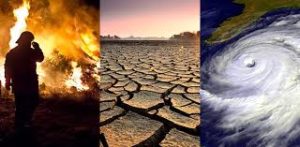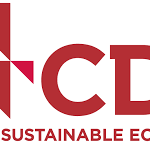
Companies and investors often overlook the costly knock-on effects of climate change. The solution? Accounting for climate change vulnerability, according to a new report from the Morgan Stanley Institute for Sustainable Investing.
Consider this: Two industry competitors have key manufacturing facilities in the same coastal community. After weathering a damaging hurricane season, one company suspends operations for six months, while the other is up and running in six weeks. Why the disparity? The latter moved key internal infrastructure to the roof after a recent flood disrupted manufacturing. The former restored its facility exactly as it was beforehand. Their respective climate vulnerabilities—the underlying weaknesses that can exacerbate the consequences of exposure to climate-related events—differ significantly, leading to different levels of risk and financial impacts.
In this case, and others, companies and investors are unprepared, having overlooked the adverse knock-on effects of climate-related events on both direct and indirect operations, according to a new report from the Morgan Stanley Institute for Sustainable Investing.
However, by considering these climate vulnerabilities, the report says, markets, investors and consumers can be better prepared.
Climate change has become an investment consideration impossible to ignore, as related disasters and economic losses grow1 and regulators increasingly recognize it as a systemic financial risk. Moreover, among institutional and individual investors, demand to integrate climate change as a factor in portfolios is high: Of institutions, 44% are actively considering or seeking to address climate change as a sustainability issue and 78% of individuals are interested in it as an investment theme, according to the report.
Despite this, investors find themselves charting new territory when it comes to assessing climate-related risk. Efforts by organizations including the Task Force on Climate-Related Financial Disclosures (TCFD) and the Sustainability Accounting Standards Board (SASB) have helped spur more transparent corporate environmental disclosures, but access to certain data continues to be a challenge. While related information may reveal direct operational exposure to potential climate-related events, it rarely accounts for indirect repercussions that would help investors better assess risk and compare peers.
The onus, then, falls on investors to ask the right questions and perform thorough analyses, which they can do only if they’re equipped with a comprehensive way to assess climate change risk. The Morgan Stanley Institute for Sustainable Investing’s three-pronged framework is designed to do just that.
Climate Change Risk: A Three-Dimensional Assessment Framework
The Morgan Stanley Institute for Sustainable Investing defines climate-related risk in three ways:
- Events: Natural or human-induced incidents that may have adverse effects on people, companies or investors. Examples include the implementation of policies to price greenhouse gas (GHG) emissions like carbon taxes, or physical hazards, such as hurricanes or drought.
- Exposure: Factors such as business activities or locations that influence whether climate change-related events will affect companies directly. Examples include operations at risk from new carbon regulations or manufacturing sites that may be at risk from extreme weather.
- Vulnerability: The underlying weaknesses that can exacerbate the consequences of exposure to climate-related events. In a hurricane, for example, vulnerability could include the failure to raise a facility’s key infrastructure to avoid flood damage and prevent business disruptions.
Given the interrelated nature of companies, their supply chains, the communities they operate in and the infrastructure they rely on, developing a thorough understanding of climate risk can help investors make more informed investment decisions. By integrating climate vulnerability into the risk assessment process, investors can improve their evaluation of potential financial impacts on portfolio companies and develop more climate-resilient investment approaches. Factoring in vulnerability can also help investors more accurately weigh risks and returns, differentiate securities, build portfolios and inform shareholder engagement strategies.
To learn more, get the full report: “Climate Impact: Understanding Vulnerability as the Missing Piece in the Climate Risk Puzzle.”
Related News:


